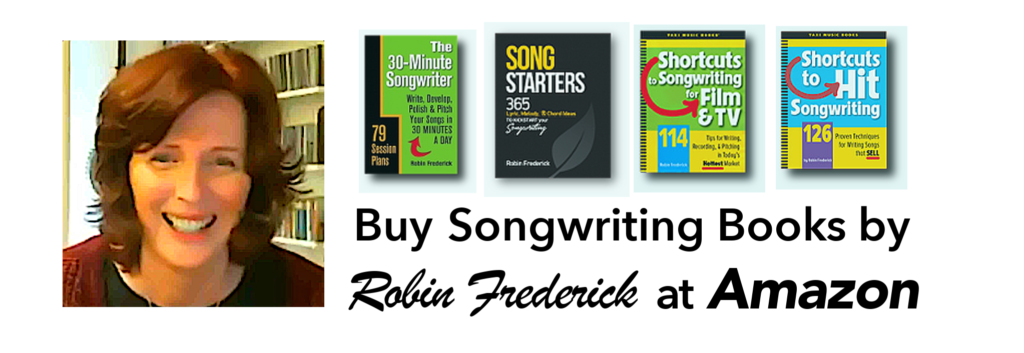Category: WHAT’S ON THE SITE
VIDEO #2 Write a Great Title
VIDEO #1 Getting Started
Uncover the Melody in Your Lyric
Got an idea for a lyric but no melody? Do you have a poem you’d like to turn into a song? Try using the melody that’s already in your words. Here’s how…
Every time you open your mouth to speak, you start singing! Don’t believe me? Just try speaking without rhythm or pitch. You can’t do it. When we speak we use pitch, volume, pace, rhythm, and words – all the elements of a song. The only difference is in a song these elements are exaggerated. Of course, we also add some repetition and a couple other things but to get your raw melody going, speech is all you need.
The Melody of Speech
It’s the melody portion of speech that communicates emotion. In fact, just by changing the melody you can give the same words an entirely different emotional meaning. Try this: say the phrase “Oh, no?” as if you’re asking a question. Now, say the same phrase –“Oh no!”-as if you’re anxious and frightened. Notice the difference in the melody. Exaggerate the emotion in the second phrase and you’ll really hear it.
It’s the melody portion of speech that communicates emotion. In fact, just by changing the melody you can give the same words an entirely different emotional meaning. Try this: say the phrase “Oh, no?” as if you’re asking a question. Now, say the same phrase –“Oh no!”-as if you’re anxious and frightened. Notice the difference in the melody. Exaggerate the emotion in the second phrase and you’ll really hear it.
In the first phrase the “no” has a slight rising melody. In the second phrase, the “no” has a slight downward melody, words were higher pitched, the pace was faster, the volume louder. Now try saying “Oh no.” with a sarcastic, disbelieving, ‘you’ve got to be kidding’ tone. It’s an entirely different melody from the other two.
Verse and Chorus melodies
To achieve the conversational tone of many of today’s song verses, try speaking your verse lyric in a conversational way, then exaggerate it a little to begin creating your verse melody. Keep the pauses that occur naturally and exaggerate the little ups and downs in your speaking voice. You’ll want to make changes later but, for now, this will give you a good place to start. Remember, this is your raw material, not the finished melody.
Choruses often have more energy and urgency, conveying more of the song’s emotional heart. As we saw with the “Oh, no!” phrase, the more urgency and emotional energy there is, the more the melody of speech tends to rise. That’s why very emotional Pop and Rock choruses work well in a higher note range. Speak the chorus lyric with as much emotion as you can put into it. Now, exaggerate the pitches, keeping the rhythm of the words and any pauses that occur naturally. This will get you started on your chorus melody.
Record your raw melody ideas
Once the lyric has led you into some melody lines, record a quick vocal to preserve your original idea. Then sit down with your guitar or keyboard and starting roughing out the chords. For those of you who don’t play an instrument, try a music program like Band In a Box which will create a music track for you. You can change the chords until you get something you like. Rework the melody as you go along to give it a clearer shape (a good mix of repetition and variation) while preserving your original idea.
More songwriting melody tips:
Whose Melody Is It?
Question: “After I write a song, how do I know I haven’t copied someone else’s melody? Sometimes I think I’ve heard it before but I’m not sure.”
Answer: That’s a good question! If the melody sounds familiar to you and it’s a nagging feeling that won’t go away, try playing it for friends to see if anyone recognizes it. That’s what Paul McCartney did with the melody of “Yesterday.” Since it came to him easily, he was suspicious that he might have been re-creating a melody he had heard before. He hadn’t written the lyric yet so he used the nonsense phrase “scrambled eggs” where he would later sing the word “yesterday.” No one recognized the melody, so he went ahead a wrote the final lyric.

